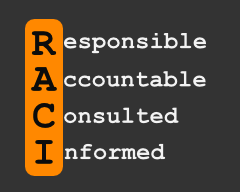Previously we discussed the various steps a product manger is involved in during the innovation and operation phases of a product lifecycle. One may wonder how one person could be capable of so many aspects of product development and management? The answer is they're not. Product mangers need to be a jack of all trades, they need familiarity in all aspects of the product process.
Facilitation: Product mangers, need a strong background in driving initiatives forward, they need to be comfortable speaking in front of senior management; this requires excellent public speaking capabilities along with organisational abilities and the ability to mediate multiple points of view and align a group along one objective.
Design: Product managers must have a strong understanding of UX design, they need to be able to understand how research is conducted, that the right research is conducted, and that the right audience is being targeted. Product managers also need to often act as the middle man between engineering and design ensuring that designs are validated as feasible and optimal.
Engineering: Product managers must be able to engage with engineering teams, ensuring that engineering understands the designs as intended. Product managers also need to provide enough guidance to ensure that the product is not over or under engineered; factoring in budget and timelines.
Marketing: Product managers need to engage with marketing teams, for an internal initiative, it'll be change management, regardless, the Product manager must specify who the target audience is, what is the value proportion, that the marketing or change process aligns with the overall vision and mission of not just the product/service, but the organisation.
Project management: product managers often times need to work very closely with project managers or even take one many of those responsibilities themselves working cross functionally to ensure the product/service is delivered on time and on budget.
Customer support: Product managers need to be able to ensure that Customer support has everything they need to engage with customers confidently and effectively.
Ideally product managers have a familiarity of all of the above, but will generally possess a proclivity towards the aspects which align with their background. There is no right or wrong, just which strengths are appropriate to which context.
The product mangers job at the end of the day is to guide the innovation and operation processes, while making sure that each contributor and stakeholder aligns to vision and mission of the product or service; with so many moving parts it's very simple lose track of who is responsible for what. Luckily we can borrow a simple artefact from project management known as the RACI chart.
Responsible: The individual or group who is/are responsible for the actual work of a deliverable, they are the ones doing the "work".
Accountable: refers to the individual who leads those responsible, this individual must have the authority over those responsible and will be judged by the final output, for example the marketing strategy, their will most likely be a number of contributors, but only one senior who is able to identify what should be done, and what done looks like.
Consulted: refers to the individuals(s) who have expertise or will be impacted downstream and should be consulted throughout each process.
Informed: refers generally to stakeholders who want/need to be kept up to date with progress.
Throughout the innovation and operational processes of a product's lifespan, their can be dozens if not hundreds of tasks; a RACI chart allows us to keep track of who is/was responsible, accountable, consulted and informed throughout the process. Depending on the Product/Service this chart can span anywhere between one to dozens of pages.
A RACI chart could look something like this
The tasks and roles above are not important, it's the concept of clearly being able to understand which role is responsible, accountable, consulted, or informed regarding which task. A RACI chart will target the appropriate communications to the appropriate audience, ensuring that the right people have the information they need while minimising information overlaod.





